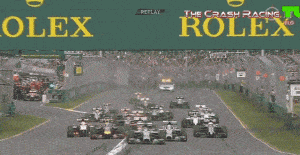
It’s no longer an option to be the strong household name brand in an industry.
You have to expand your technology capabilities to stay in the market.
There are product lines that have had a consistent core technology for long periods of time.
Companies that are leaders in these are “the experts” and they hold maximum market share because the customers know what brand to buy if they want the best.
But if there is a sudden change in the technology, then that “bulletproof” brand name can be tarnished in one product cycle.
What if the core technology suddenly changes to include new electronics or software controls or something we would never have imagined.
The competitors are about to gain market share based on feature add, sometimes “jumped into the future” feature add; The iPad, Tesla electric vehicles, Tesla assisted autonomous driving, smartphone, Solid State memory, automotive electronic fuel injection, jet engines, desktop printer – this is a “Side Swipe”.
As the leader attempts to include these features that are not based on its core skill set, it quickly finds out what is lacking in its program process.
Suddenly, the company needs all the peripheral program functions that enable the development of technology within a short period of time.
That’s not the same as continuing to refine a wheelhouse technology.
Are there program practices in place that correctly distribute resources and program metrics across the needed goals of reliability, cost point, and these new features?
How much risk do you take with incorporating new features and getting them to market quickly without compromising the “bulletproof” status of the brand?
Once the balance has been decided, how are the new practices implemented so that they continually guide the program until release?
Considering the thermostat
Look at a long time static technology such as home thermostats.
The base technology has been the same for decades. Usually, they employ a mechanical switch based on a mercury bulb or a bimetal strip.
Brands such as Honeywell held the majority of the market for decades.
It was a mechanical system that was continuously optimized in small increments each product cycle.
Then something happened in 2011. NEST showed the world that a house thermostat should, of course, be remotely controlled from your phone as you start your journey home.
Honeywell has had to scramble to compete by developing models with such a feature.
Did its thermostat design division have the culture and program process to fully control and measure resource balance among reliability, cost point, and time to market?
So far it looks a bit iffy.
Related:
Key Elements for Your Project Specific Reliability Plan (article)
5 Steps to Building a Reliability Culture (article)
Reliability as Part of Every Decision (article)

Leave a Reply